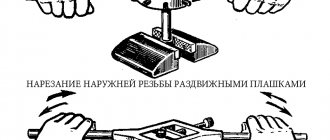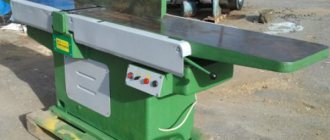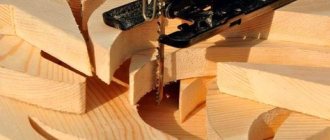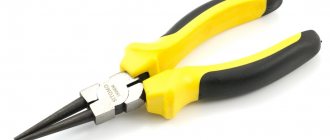Hands from the right place | 03/17/2016
Pliers and pliers belong to the pliers tools, another name for which is pliers. All of them are designed to manipulate objects, as well as to perform various operations, including tooth extraction. Moreover, even dental pliers are diverse. The situation is similar with such household tools as pliers and pliers, the difference between which exists, although not obvious to everyone. What these items are and for what purposes they are used will be discussed in this article.
Pliers
Considering what pliers are, we should note the translation of this concept, which means clamping a rod. This moment largely determines the shape of the working part. The key features that the pliers have are the following:
- The clamping edges have special oval holes or grips that are designed for tubular products of a wide variety of diameters. At the same time, the recesses themselves have special notches, due to which the degree of fixation of the workpiece is significantly increased.
- Pliers and pliers are often confused due to the fact that the latter are made in a combined form. However, they differ in the presence of a special cutting edge.
- In order to be able to fix cylindrical products of various diameters, some models have a whole set of recesses. Recently, adjustable pliers have been manufactured, in which the position of the hinge can be changed. Due to this, the diameter of the product, which can be fixed, changes. This tool is considered more advanced in use.
It is worth considering the fact that structurally the pliers are made larger, due to which it is possible to fix larger workpieces. In the manufacture of the main part, steel with increased strength is used. To improve the basic qualities, thermal hardening is carried out.
Some versions of the tool are equipped with plastic handles, which allow for various electrical installation work. It is worth considering that their use is only possible if the maximum voltage is indicated on the handle. Otherwise, using pliers is not recommended.
Design features
So, first let's start with the design features of the pliers. All pliers are classified as articulated pliers tools. They are used for various works that are associated with the installation of electrical systems, plumbing systems, as well as all other works. This is one of the universal tools that can be used to grab any parts of various shapes and small thin tubes.
Pliers include two separate tools in their design. These are completely different types of wire cutters and pliers. Thanks to this, they are able to perform any small housework even in the hands of a novice.
Using them, you can easily cut wires made of soft metals, which helps you cope with the installation of electrical wiring in the house. It is not recommended to bite hard metals with them, as the cutting edges become deformed and become unusable.
The jaws of the pliers always have a special notch that allows you to securely hold the part being grabbed. If you look at different photos of pliers, you can notice one detail. The notch can be located on either side of the pliers, which makes them more convenient to use.
The correct assembly of pliers largely depends on their quality and resistance to various conditions. They must be fastened well enough to each other so that there is no play, which could lead to failure of the tool.
Pliers and pliers difference
Both versions of the instruments have many similar features. The difference between pliers and pliers is as follows:
- Working sponges can have different shapes. The name of the pliers determines that the working surface is absolutely flat, and for the tool in question it has large notches.
- The dimensions of the mechanism also differ significantly. The pliers are often made larger, the jaws more massive.
- Pliers are often equipped with swivel joints. They allow you to change the distance between the two jaws, making it possible to grip products with different diameters.
- The device is characterized by versatility in use.
- The surface indicates what material is being made for the main part. Some alloys are characterized by increased resistance to mechanical stress.
Despite the fact that both versions of the tools are very similar, only the pliers have special recesses for fixing cylindrical workpieces. However, they are not equipped with special cutting edges that allow cutting through wire or other materials.
Device and principle of operation
The main device of the pliers has a simple pliers principle and involves three main parts: a handle, a working area and a hinge joint. The jaws themselves, in addition to their flat shape, have special internal notches for reliable fixation of the part.
In most cases, the material used to make pliers is unalloyed high-carbon steel, which is particularly strong due to double hardening. The hinge connects the parts in the shape of the letter X, and the working part smoothly transitions into the handle. The surface of the tip is coated with a special compound that prevents the occurrence of oxidation processes and corrosion.
The technology for applying a protective layer can be different:
- chemical oxidation, which gives the instrument a pronounced graphite tint;
- phosphating, which gives the tip a gray color, from light to dark tone with a matte tint;
- chrome plating, which gives the material high anti-corrosion properties.
The operating principle of the tool is to manually adjust the grip by extending the handles. Some models allow you to work with one hand, which is most convenient for the user when performing certain types of work.
Electrical installation pliers
Electrical installation pliers can be included in a separate group. They are characterized by certain operational characteristics that are not characteristic of other mechanisms. When using such a tool, you can carry out the following types of work:
- Perform temporary fixation of flat parts and various round surfaces.
- Bend and twist the wire.
- Cut a soft alloy cable with a cross-section of no more than 15 mm.
- Carry out electrical insulation removal. Often power transmission cables are insulated using a special material that needs to be removed.
- Crimping of tips. To connect various elements, the cross-section is often changed by crimping.
- The surface is cleaned from oxide and other contaminants.
It is worth considering that most versions of the tool are designed to operate at voltages up to 1000V. This indicator must be indicated by the manufacturer on the handle.
Multifunctional pliers
Recently, pliers and round nose pliers have become quite widespread. Universal versions are included in the tool kit for a wide variety of jobs. At the same time, do not forget that the hinge of pliers and pliers is significantly different. Multifunctional are characterized by the following features:
- They are not intended for use with electrical circuits, as there is a very high risk of electric shock. Handles are rarely made using insulating materials.
- In the manufacture of the main part, a material characterized by low performance characteristics is used. That is why such pliers can be classified as household class.
- Some designs include a housing in which the jaws are hidden to protect them from environmental influences.
In general, we can say that multifunctional pliers can replace many tools, but not long-nose pliers. In addition, the word pliers itself means that the working surface is flat and has notches.
TOP 8 popular pliers and pliers
The rating presents modern models of instruments. Based on customer reviews, the best manufacturers were selected, and lists of advantages and disadvantages of hand-held devices of all main types were compiled.
Felo
Dielectric pliers from the German manufacturer Felo have chrome-plated handles that are 16 cm long with jaws. The handles are sheathed multi-component. The reinforced cutting edge allows you to work with round objects and wiring. Excellent workmanship, thick steel, metal is not afraid of water. Not suitable for clamping thin wire, as it has a gap between the jaws of 1 mm. Limit – 1000 V. Color – bright red. Price: from 2170 rubles. Available to order online.
Felo pliers
Advantages:
- durable;
- quality of material;
- bright.
Flaws:
- price;
- gap between jaws;
- not suitable for thin wires.
NWS CombiErgo
Combined pliers with a curved head NWS 1096-69-200 from the German company ErgoCombi are made of forged, oil-treated steel and can handle cutting wire of any hardness. The asymmetrical work surface holds round objects. The cutting edges are hardened, which increases the service life to 1 year of continuous use. The ergonomic head is rotated for better penetration into hard-to-reach places; the device is indispensable for a locksmith. Comfortable handles have a multi-component coating and work on compression and release without much effort. Size: 20 cm, weight: 280 g. When ordering online, there is a chance that you will receive an item in a different color than the stated red color. Price: 1920 rub.
pliers NWS CombiErgo
Advantages:
- quality of material;
- comfortable;
- cutting ability.
Flaws:
- price;
- when purchasing online, a different color may come;
- heavy.
Delo Techniki 413160
Chinese-made mounting pliers are able to reach the farthest corners of objects, thanks to their thin curved ends. Frequent, narrow notches on the jaws cope with thin wire, but are not suitable for very soft metal. Designed for domestic use, not for service use. The service life is determined by the frequency of use. Small size: 16 mm, weight: 230 g. Pale green plastic handles. Price: from 580 rubles.
pliers Delo Tekhniki 413160
Advantages:
- price;
- curved nose;
- compact.
Flaws:
- jams soft wiring;
- short service life;
- pale color.
STANLEY kit
A budget set of pliers and wire cutters is suitable for home work and professional use, including contact with thin and medium-thick metal. The kit includes: wire cutters 10 cm x 5 cm x 1 cm; pliers 10 cm x 5.5 cm x 1 cm; pliers with short jaws for clamping and breaking small parts 15 cm x 5 cm x 1 cm. Not suitable for interacting with live parts. The handle, comfortable to the touch, is covered with black rubber. Price: 919 rubles for 3 items.
Set of STANLEY pliers
Advantages:
- convenient typing format;
- price;
- multifunctionality.
Flaws:
- the handles are poorly made;
- not a very strong metal;
- burrs, abrasions on the jaws.
Gross
German locksmith pliers are professional tools that have been tested according to international quality standards. In addition to the basic, general functions, the device can be used as wrenches M8 - M10 / 0 11 - 17 mm. The cutting part is hardened by current, which significantly increases the strength of the model. The hinge is shifted towards the cutting edge - this guarantees a more powerful cut. The ergonomic handle made of rubber and plastic does not create discomfort during use. The product is not subject to corrosion, thanks to a special coating. Useful when repairing a car. Length: 16.5 cm. Price: from 1590 rubles.
Gross pliers
Advantages:
- serve for a long time;
- anti-corrosion coating;
- additional stops on the handles.
Flaws:
- the metal of the jaws is not hard enough;
- price;
- Do not bite through self-tapping screws.
Knipex
Combination pliers from the German manufacturer Knipex are designed for gripping and holding large and medium-thick wire, flat and round metal objects. The working part is made of high-strength hardened steel to a hardness of about 60 HRC, this ensures tight clamping and long service life. The main purpose is for installation work. Relatively small weight: 120 g, with a product length of 18.5 cm. The plastic handles are plain red. Cost: from 1599 rubles.
Knipex pliers
Advantages:
- suitable for round parts;
- hard sponges;
- neatly made.
Flaws:
- thin plastic on the handles makes the hand uncomfortable;
- price;
- simplicity of design.
Sapfire S-Tech SAS-5001
8 in 1 pliers made in China are suitable for semi-professional and household use. Combining 8 useful items at once, it becomes an indispensable thing for a traveler. The main component of the model is the wire cutters, which have jaws of medium length and power; they can clamp and hold medium-density metal. Product length: 10.5 cm. The set is packed in a case. Price: 900 rubles.
The stainless steel product consists of retractable side devices:
- pliers;
- knife;
- crosshead screwdriver;
- opener;
- can-opener;
- file;
- ruler;
- saw.
Sapfire S-Tech SAS-5001
Advantages:
- the presence of different objects in one;
- price;
- stainless.
Flaws:
- weak grip;
- soft alloy;
- miniature, homemade.
Varyag 87004
Double lever pliers are made of niobium alloyed steel 58 HRC. Ergonomic, insulated, gas-resistant, rubber-covered handles are adapted for comfortable carpentry, plumbing, and household work. Capable of clamping flat as well as cylindrical parts and wires. Produced in Germany. Product length - 20 cm, weight - about 270 g. Price - 1432 rubles. The color of the base is blue, the sides of the handle are light green.
Varyag 87004
Advantages:
- German quality;
- copes even with thick metal;
- performs its functions.
Flaws:
- price;
- heavy;
- The mount looks flimsy.
How to use pliers?
There are quite a large number of recommendations regarding the direct use of the tool. They look like this:
- Do not forget that the tool must be lubricated periodically. Otherwise, the mechanism will not be able to serve for a long period.
- The surface of the working part determines that the mechanism cannot be used for fixing large workpieces.
- Capturing parts involves fixing them in the required position at the time of processing. This is especially true when you cannot hold the product with your hands.
- The use of pliers determines that the surface should not be exposed to any impact that will cause deformation.
- In most cases, the mechanism is used to fix flat parts.
- When working with conductive elements, do not touch the metal part with your hands.
- This type of mechanism is not intended for cutting through thick and hard materials, as this may cause damage to the working surface or hinge.
Most often, such a tool is used in radio installation. They are quite simple and if properly maintained they can last for a long period.
How to use pliers?
There are also certain recommendations regarding the use of pliers. They are as follows:
- Do not forget that the working part must be constantly lubricated. Otherwise, rust will appear on the surface.
- The distance between the two parts of the handle should be such that there is no possibility of pinching your fingers during operation.
- The device is designed for fixing flat and cylindrical products.
- At the moment of cutting the wire, the cutting edge should be perpendicular, thereby ensuring favorable conditions for cutting.
- When biting off the wire, there is a very high probability that individual pieces will bounce off. Therefore, you need to be careful when working.
At the same time, working with electrical elements is possible only when using pliers with insulated handles. Manufacturers, as a rule, apply the required information to the surface.
Types of pliers
The popularity of instruments has led to the fact that a wide variety of models can now be found. A set of pliers will help solve many problems. By area of use, tools are divided into types:
- installation;
- curved combined;
- platypuses;
- elongated;
- reinforced;
- dielectric pliers;
- adjustable, sometimes called pipe;
- energy saving;
- lever;
- for eyelets;
- folding;
- mini pliers;
- adjustable;
- clamping;
- metalwork;
- fishing;
Types of pliers are divided by size:
- for fine work – 10 cm;
- for installation and plumbing – 16-20 cm;
- for industrial work – 20-30 cm.
Pliers: how to choose and their features
A fairly common question is how to choose pliers. The wrong tool significantly complicates the task and makes the work less comfortable to carry out. Among the recommendations for selection, we note the following:
- First you need to decide for what kind of work the tool is selected. As previously noted, working with electrical equipment requires special versions with well-insulated handles.
- The dimensions of the structure are important. This indicator determines which workpieces can be recorded.
- The functionality of pliers depends on a variety of factors. For example, the working surface can be flat with notches, have recesses for cylindrical workpieces and a cutting edge for cutting wire.
Also, when choosing, attention is paid to what materials are used in the manufacture of the main part and handle.
Pliers design and purpose
In many ways, the design of the instrument determines its purpose. It is represented by a combination of the following elements:
- Two jaws made of metal and connected to each other by a hinge.
- The jaws are continued in the form of a handle, which is often covered with special materials.
The main characteristics depend on the build quality and materials used. Classic versions consist of only a few elements that can only be exposed to high humidity.
Pliers design and purpose
In many ways, pliers resemble pliers; their design and purpose are not significantly different. The key points are:
- The two parts are connected to each other by a hinge.
- The working surface is flat, and the handle is curved.
- The handle can be plastic or rubber.
The purpose of this tool is somewhat different. As previously noted, the scope of its application is significantly smaller.
Universal pliers
Recently, universal pliers have become quite common. They have the following features:
- Suitable for various jobs. An example is unscrewing bolts and nuts in the absence of the required key. The surface of the head may have a complex shape.
- They are not expensive. Cost reduction is achieved by using inexpensive materials.
- They have compact sizes. This simplifies storage and transportation.
The universal version is not recommended for use with live elements.
What is the difference
Pliers were created earlier than pliers, which in general are an attempt to modernize the former.
How to distinguish:
- The pliers have a toothed groove that ensures a strong grip, even when the product being grabbed is made in the shape of a ball or circle. This same design feature allows you to tighten bolts and nuts, which is impossible with pliers.
- The pliers have side cutters. They are a sharp blade with which you can remove the insulation of a wire or cut through the wire.
- On the outer sides of the hinges of the pliers there are cutters designed for cutting wire elements made of metal.
In other words, the difference between these instruments is determined by the presence of the three design features listed above.
Pliers and pliers have an insignificant difference
Another example is the extensive use of the tool. If the pliers are multifunctional, then the pliers are more narrowly targeted.
Varieties
There are a variety of types of pliers, all of which are characterized by their own specific features. The following types of instruments are quite widespread:
- The model with flat jaws is often used when working with small parts.
- In some cases, the working jaws are bent at a certain angle. Due to this, it is possible to work with parts to which access is limited. An example is electronics.
- There are also platypuses. They are characterized by the fact that the working part is represented by elongated jaws. This tool is similar in functionality to tweezers.
- There are also special pliers designed to work with live elements. There are also products whose jaws have linings that prevent damage to fragile materials.
The selection of the appropriate design option depends on the type of work that needs to be done. In this case, special sets are often found.
Purpose of pliers
When carrying out electrical installation work, it is necessary to use a special tool that can quickly and accurately grasp and bend the wire at the required angle. Thanks to the elongated shape of the jaws, classic pliers are optimal for use when repairing household appliances and wiring; they can also be used to quickly cut through wire. The hand tool is convenient when working with small parts, and with the help of the flat surface of the jaws you can securely grip and bend the wire, twist it and hold it for further installation.
In addition, such a tool is successfully used as a wrench, but the dimensions of the fastener must correspond to the expanding jaws.
Dielectric
Dielectric versions are used if the clamped product is energized. Key features include:
- High degree of protection against electricity. It is achieved by using a special material that covers the entire surface of the handle.
- In the manufacture of the working part, special alloys designed to withstand current are also used.
- The permissible voltage is indicated on the handle. It can vary over a fairly large range.
Dielectric pliers are often used as a universal tool. However, even minor damage to the handle is not allowed.
Adjustable or tube
There are also adjustable pliers, which are used for fixing pipes and other workpieces with a high diametrical size. The design of pipe tools has the following features:
- The working part has special recesses that are suitable for cylindrical workpieces.
- You can change the diametrical size using a special hinge. It allows you to change the distance between the two working jaws.
- The jaws and handles are quite large. It is worth considering that when applying force away from the hinge, the transmitted force increases
- When manufacturing the main part, a material is often made that is characterized by increased resistance to moisture. Due to this, the service life is significantly extended.
This type of pliers belongs to a separate category, since they are suitable exclusively for fixing a pipe. At the same time, manufacturers indicate the minimum and maximum diameter of the fixed element.
In specialized stores there are a variety of kits that are purchased for work in domestic conditions. However, an experienced craftsman selects each tool separately, since many of the sets are of low quality.
Tips for choosing quality tools, care
When purchasing pliers or pliers, you need to know what to look for and avoid making mistakes when choosing.
The most expensive are not always the best; here are a few recommendations for purchasing a quality tool:
- You should consider the purpose for which the product is purchased. Consider the narrow purpose of the species. For an electrician, a dielectric and combined model is suitable, and a housewife can get by with wire cutters.
- Pay attention to the functionality of the item, study the possibilities in detail.
- Cheap products from China, often presented on Ali Express, most likely will not last long; there is a risk of purchasing a product made from low quality steel. A reliable manufacturer has been on the market for more than a year.
- Household products differ from professional ones in terms of service life, quality, and their price is much higher;
- In an offline store, you can test the item by squeezing the product tightly, there should be no gaps between the jaws, there should be soft resistance from the handles.
One of the disadvantages of metal is corrosion, so items must be kept dry, it is advisable to store them in a fabric bag. These measures will eliminate contact with other products and prevent the penetration of dampness. The hinge is periodically treated with a special lubricant, which can be purchased at the same time as the tool. Broken, heavily worn handles can always be replaced with new ones.
A striking instrument in a bright shade is easier to find among others; for this purpose, preference should be given to orange, yellow, or light green.











